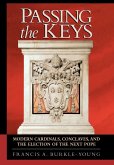Confraternities were - and are - religious brotherhoods for lay people to promote their religious life in common. Though designed to prepare for the afterlife, they were fully involved in the social, political and cultural life of the community and could affect all men and women, as members or as the recipients of charity. Confraternities organised a great range of devotional, cultural and indeed artistic activities in addition to other functions such as the provision of dowries and the escort of condemned men to the scaffold. Other works have studied the local activities of specific confraternities, but this is the first to attempt a broad survey of such organisations across the breadth of early modern Italy. Christopher Black demonstrates clearly the extent, diversity and influence of confraternal behaviour, and shows how such brotherhoods adapted to the religious and social crises of the sixteenth century - thus illuminating current debates about Catholic Reform, the Counter-Reformation, poverty, philanthropy and social control.
Table of contents:
List of illustrations; Preface and acknowledgements; List of abbreviations; Map of Italy; 1. Setting the scene; 2. Confraternities: what, where, for whom?; 3. Control and sponsorship; 4. Internal organisation and religious life; 5. External religious devotions; 6. Confraternities and finances; 7. Attitudes to poverty; 8. Poverty: needs and general responses; 9. Confraternity philanthrophy: 1. Hungary, thirsty, a stranger, naked, and ill; 10. Confraternity philanthrophy: 2. The imprisoned, ignorant and dead; 11. Confraternity buildings and their decoration; 12. Conclusions and suggestions; Appendices; Bibliography; Index.
Christopher Black demonstrates clearly the extent, diversity and influence of confraternal behaviour, and shows how such brotherhoods adapted to the religious and social crises of the sixteenth century - thus illuminating current debates about Catholic Reform, the Counter-Reformation, poverty, philanthropy and social control.
Christopher Black demonstrates clearly the extent, diversity and influence of confraternal behaviour.
Hinweis: Dieser Artikel kann nur an eine deutsche Lieferadresse ausgeliefert werden.
Table of contents:
List of illustrations; Preface and acknowledgements; List of abbreviations; Map of Italy; 1. Setting the scene; 2. Confraternities: what, where, for whom?; 3. Control and sponsorship; 4. Internal organisation and religious life; 5. External religious devotions; 6. Confraternities and finances; 7. Attitudes to poverty; 8. Poverty: needs and general responses; 9. Confraternity philanthrophy: 1. Hungary, thirsty, a stranger, naked, and ill; 10. Confraternity philanthrophy: 2. The imprisoned, ignorant and dead; 11. Confraternity buildings and their decoration; 12. Conclusions and suggestions; Appendices; Bibliography; Index.
Christopher Black demonstrates clearly the extent, diversity and influence of confraternal behaviour, and shows how such brotherhoods adapted to the religious and social crises of the sixteenth century - thus illuminating current debates about Catholic Reform, the Counter-Reformation, poverty, philanthropy and social control.
Christopher Black demonstrates clearly the extent, diversity and influence of confraternal behaviour.
Hinweis: Dieser Artikel kann nur an eine deutsche Lieferadresse ausgeliefert werden.








